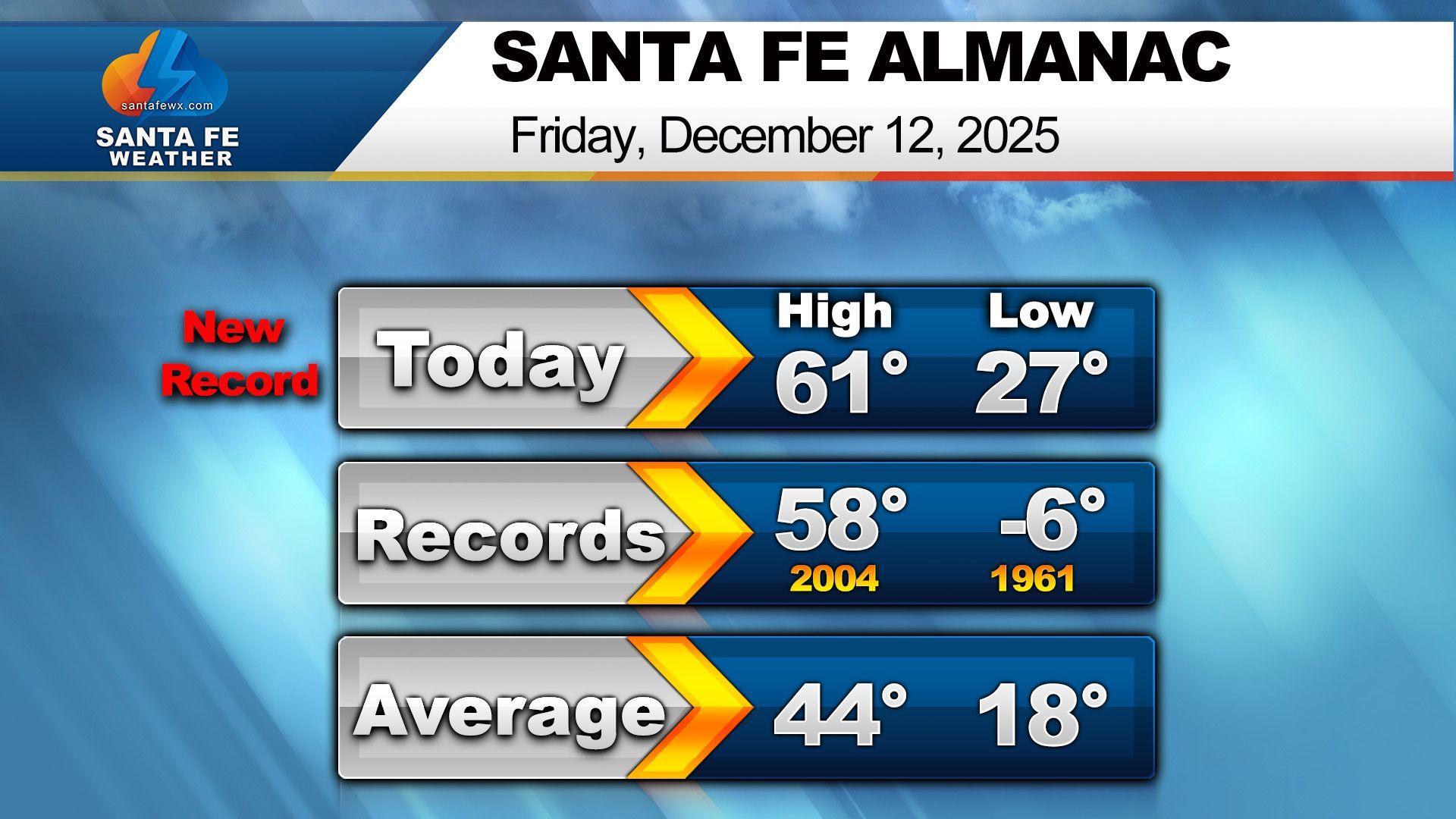Santa Fe Forecast
December 13, 2025
Local Weather
Tools
Forecast maps and graphics for selected communities
Fire Risk
This Fire Risk Forecast assesses the potential for wildfire ignition and spread based on factors like weather conditions, fuel moisture, and topography.
In New Mexico, fire danger is significantly influenced by the state's arid climate, varied elevations, and diverse vegetation. Periods of low humidity, high temperatures, and strong winds can rapidly dry out grasses, shrubs, and forests, increasing the likelihood of wildfires. For instance, the National Weather Service issues Red Flag Warnings when conditions are ideal for wildland fire ignition and propagation, advising residents to avoid outdoor burning and activities that could start fires.
Drought Monitor
A drought intensity forecast predicts the severity and duration of drought conditions by analyzing factors like precipitation deficits, soil moisture, streamflow, and temperature anomalies. These forecasts help anticipate water shortages, agricultural impacts, and increased wildfire risks.
In Santa Fe, droughts are common due to the region's arid climate and variable precipitation. As of March 4, 2025, approximately 71% of New Mexico is experiencing drought conditions, with 20% classified as abnormally dry. Currently Santa Fe is in moderate drought.
Radar
The average annual precipitation is less than 10 inches, resulting in a high desert climate. Showers and thunderstorms are likely in the summer months when the monsoon rains fall. The monsoonal moisture usually begins around the 4th of July and continues through early September. Winter storms can bring a mix of rain and snow with heavy snow in the mountains.
Precip Cast
The average annual precipitation is less than about 10.71", resulting in a high desert climate. Showers and thunderstorms are likely in the summer months when the monsoon rains fall. The monsoonal moisture usually begins around the 4th of July and continues through early September. Winter storms can bring a mix of rain and snow with heavy snow in the mountains.
Temperature Cast
Hour by hour temperature forecast for New Mexico using the Euro model. Look ahead for the next three days to see the weather headed your way. Forecast is updated four times daily. Click on any city and get a detailed forecast for the next 6 days.
Snow Cast
On average, Santa Fe gets about 22 inches of snow each year. However, that can vary greatly from year to year and where you are in Santa Fe. The 22 inches is the official total at the airport on the south side of town where the elevation is 6,348 feet. The elevation of the Downtown Santa Fe Plaza is 6,991 feet. So the plaza can get a little bit more snow than the south side of town. Once you head into the mountains and elevation rises, you will see much more snow. The average snow at the Santa Fe Ski Area is about 225 inches per year. Snow can begin as early as October, but isn't likely until December. Snow can continue through February and March, but it has been known to snow in April and as late as May.
Cloud Cast
This map displays the percentage of cloud cover for any given region, showing how much of the sky is expected to be obscured by clouds at a specific time. The data is color-coded, with lighter areas indicating clearer skies and darker areas representing heavier cloud coverage.
The map provides a real-time visual of current and forecasted cloud conditions. This is especially useful for outdoor planning, photography, astronomy, and understanding incoming weather systems. Cloud cover in the Santa Fe area can vary significantly due to its elevation and proximity to mountain ranges, making tools like this valuable for day-to-day decision-making.








